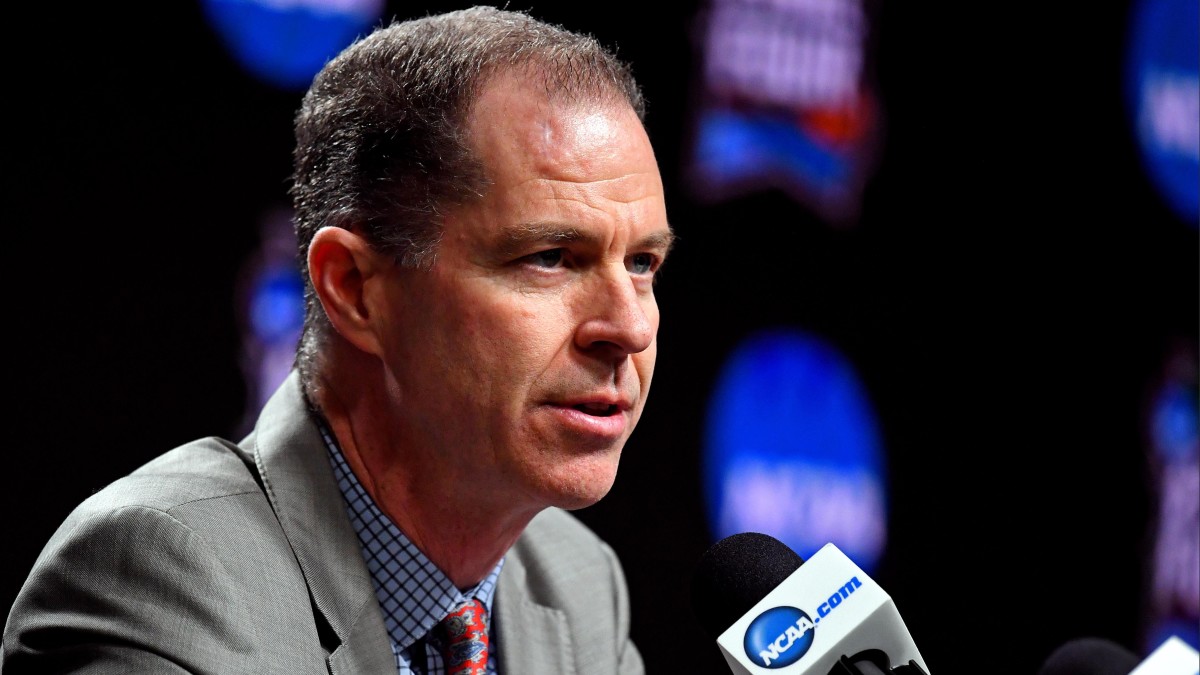The Difference in Return Plans for College Basketball vs. Football Is Striking
On a day when college football applied one more mismatched patch to its 2020 eyesore of a quilt, college basketball presented a relative work of art—a season plan that aspires to include everyone and sets broad-based national parameters.
The difference between two sports contested by many of the same schools is striking. It underscores what can be done with centralized NCAA leadership and cohesive conferences (basketball), as opposed to five oligarchies that don’t much care whether the whole of the enterprise survives as long as each gets their own (football).
Dan Gavitt, the NCAA vice president for basketball, has been the unifying presence that football has lacked over the past six months. He’s immersed himself in the workings of leagues from coast to coast, brainstorming a framework for how the season should look.
“We wanted to build consensus and consider all perspectives,” Gavitt told Sports Illustrated. “We had the benefit of time, watching other sports starting and learning from them. It’s not perfect, and we weren’t even shooting for perfection. But I do hope we’ve achieved a responsible and unified plan to start college basketball.”

The basics: a 20-hour practice week starting Oct. 14, ramping up from 12 hours per week prior; games begin Nov. 25, the day before Thanksgiving, at a time when campus occupancy will plummet as students go home for extended holiday breaks; a maximum of 27 regular-season games, with a minimum of 13 to be eligible for NCAA Tournament automatic qualifying; a recommended minimum of four non-conference games (which would aid tournament selection and seeding). And, the great hope at the end: a 68-team Big Dance, just like usual.
Dare to dream. But don’t just dream it; plan it. Gavitt led the planning. And it’s worth mentioning that the planning includes women’s basketball as well.
Football has no Dan Gavitt. It is highly unlikely that Power 5 conference commissioners would welcome a national college football czar—why hire a boss when you don’t have one—but it could help the sport as a whole. Now more than ever.
Football is too big to fail, which might be one reason its leadership can comport itself the way it does. It almost doesn’t matter how mercenary the stewardship is, because the game’s inherent popularity will sustain it. But it’s also times like this that you wonder what this fall football season could have looked like with more cooperation between conferences.
It might look a lot like the 2020–21 basketball season, which could still flop but at least has a plan. A coherent, organized plan. A plan that could work every bit as well in the Southeastern Conference as it does in the Big Ten as it does in the Pac-12.
“There are still many things to be determined with scheduling, testing protocols, (exempt tournament) bubble possibilities, etc.,” said Georgia coach Tom Crean. “But it does give everyone a target now to prepare for.”
That’s preferable to the scattershot approach of football, where the Power 5 schedule now reads accordingly: Atlantic Coast Conference and Big 12 up and running (with a multitude of interruptions); Southeastern Conference slated to start Sept. 26; the resurrected Big Ten slated to start Oct. 23-24; and Pac-12 not slated for anything before Jan. 1 (although efforts are being made to accelerate that timetable).
Back in July, the Big Ten went its own way in terms of a football schedule plan and then the Pac-12 followed. That frosted the other Big Three, leading to a football fissure that hasn’t been repaired and could easily widen in the coming months. If you thought previous iterations of the College Football Playoff selection process were controversial, wait until this time around. Ask the SEC, ACC and Big 12 how understanding they want to be about including a Big Ten champ that might have played two or three fewer games, especially after the league pulled its scheduling power play in July.
The college basketball community has a greater humility, even if it was forced upon it. Football made that clear, when it was nearly 100% the driving force behind conference realignment decisions and hoops was an afterthought. At that point, basketball programs realized their place in the college sports strata and also gained an understanding that they needed to work together to maintain the sport’s relevance.
Have there been some attempts to bigfoot the process on the way toward this schedule plan? At least one. Just last week the sport’s big dog, the ACC, unilaterally championed an all-in NCAA tourney: 346 teams plus a few carnival acts and 12 swans-a-swimming. That was a move the football powers could appreciate, but it’s likely to go nowhere—and guess what? In this sport, a league can’t really just make up its own rules and tell everyone else to deal with it.
Now, part of the basketball humility is realizing that the Big Dance dominates the sport, and the Big Dance is everyone. It is the Power 5 but also the plucky mid-majors and the dangerous low-major Cinderellas. It is nationwide, princes and paupers, all thrown together with a fighting chance for three weeks in March and April.
The hope is to get to that populist celebration in the spring. For now, Gavitt admits, “That is aspirational.” The baseline goal is for every school to play somewhere in the neighborhood of 20 regular-season games and at least one postseason tournament. If that happens, the players and coaches and fans can feel like they have something real—perhaps less real than usual, but better than the emptiness of March 2020.
“I know the players want to play,” said UCLA coach Mick Cronin.
The players want to play, and the power brokers want to make it happen for everyone. The good of the game is a concept that still is tapping out a heartbeat in college basketball, as opposed to the football ethos of every conference for itself.
